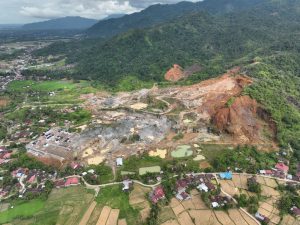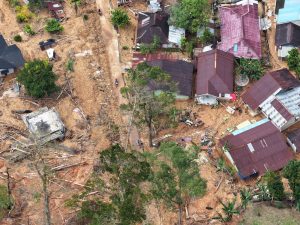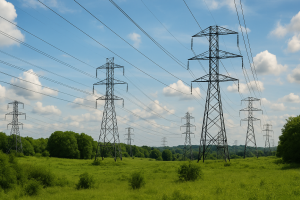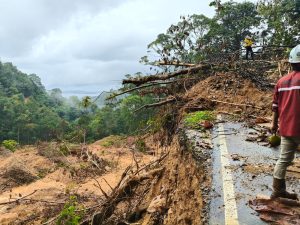Jakarta – The Institute for Essential Services Reform (IESR) calls the ambitious project of building Solar Power Plants (PLTS) with a total capacity of 100 Gigawatts (GW) a significant milestone, not only in terms of generating capacity, but also from participatory schemes, the local economy, and its contribution to reducing carbon emissions.
The government is preparing a significant transformation to answer the challenge of clean and equitable energy access to remote areas of the country. It is predicted to be a game changer for village electrification and the main motor of the national energy transition.
“This programme has the potential to make Indonesia the leader of the largest decentralised energy transition in Southeast Asia. If successful, the impact will be systemic: village economies grow, emissions fall, and energy security increases,” said Fabby Tumiwa, CEO of IESR, on Thursday, 7 August.
The 100 GW PLTS development plan is divided into two main models. First, the construction of 80 GW of solar power plants and a 320 GWh Battery Energy Storage System (BESS) that will be managed by the Merah Putih Village Cooperative (KDMP) in 80 thousand villages. Second, a 20 GW Centralised Solar Power project to support large-scale needs.
The government is directing this project as part of Indonesian President Prabowo Subianto’s Asta Cita vision, which is to realise energy self-sufficiency through strengthening the role of rural communities and utilising renewable resources.
Time to utilise the abundant solar energy potential
Fabby believes that with the increasing affordability of PLTS technology, as well as its modular nature and quick construction, this project can be a concrete solution to the energy imbalance in remote areas. Indonesia’s huge potential for solar energy ranges from 3,300 GW to 20,000 GW, spreading from Sabang to Merauke.
“In many villages, electricity is still available for only a few hours, and the quality is low. With reliable local PLTS, productive economic activities can grow, schools can run longer, and health services are optimised,” Fabby explained.
IESR also highlighted the benefits of this project to the domestic industry. By absorbing local production of solar modules and batteries, the project will encourage investment in the entire photovoltaic technology supply chain and create thousands of green jobs.
“This is not just a generation project, but also industrialisation. We need solar module manufacturers, electrical components, and technical training centres. This can strengthen the national industry and open up great opportunities for young people,” he said.
Three key challenges: location, human resources, and coordination
Despite its great potential, IESR underlines three serious challenges that must be overcome. Firstly, the selection of locations where projects are spread across 80,000 villages requires careful mapping, considering geographical conditions, electricity load requirements, and financial feasibility. For this reason, the involvement of technical colleges is considered crucial.
Second, skilled labour. Each 1 MW and 4 MWh BESS solar PV unit will involve up to 50 workers in 9-12 months of construction. However, the availability of certified technicians and installers is still minimal and uneven. The government is encouraged to conduct HR mapping and collaborate with BLK, vocational schools, and universities.
The third is cross-agency coordination. The scale of this project requires the synergy of various ministries, local governments, and the private sector. IESR recommends that this project be designated as a National Strategic Programme (PSN) with the support of a Task Force and Project Management Unit (PMU) to ensure professional and cross-sector management.
Community participation is key to sustainability
IESR emphasises the importance of involving local communities from the very beginning, from planning, training, to operations. This will ensure that communities are not only beneficiaries but also part of the energy system itself.
“Villagers must have a voice in this project. They should be involved as operators, technicians, and even members of the co-operative. This will strengthen the sense of ownership and sustainability of the project,” said Fabby.
If run with a participatory, transparent and corruption-free approach, this project is believed to be the main pillar of Indonesia’s Second Nationally Determined Contribution (SNDC) for emission reduction.
Moreover, the 100 GW solar power project is not just about energy, but about social justice, economic equality, and technological sovereignty. “This is no longer about replacing fossil electricity with solar. It is about how our villages stand on their own feet, and Indonesia has its energy industry. That is the essence of a just and sovereign energy transition,” Fabby concluded. (Hartatik)
Banner photo: NEX Indonesia















